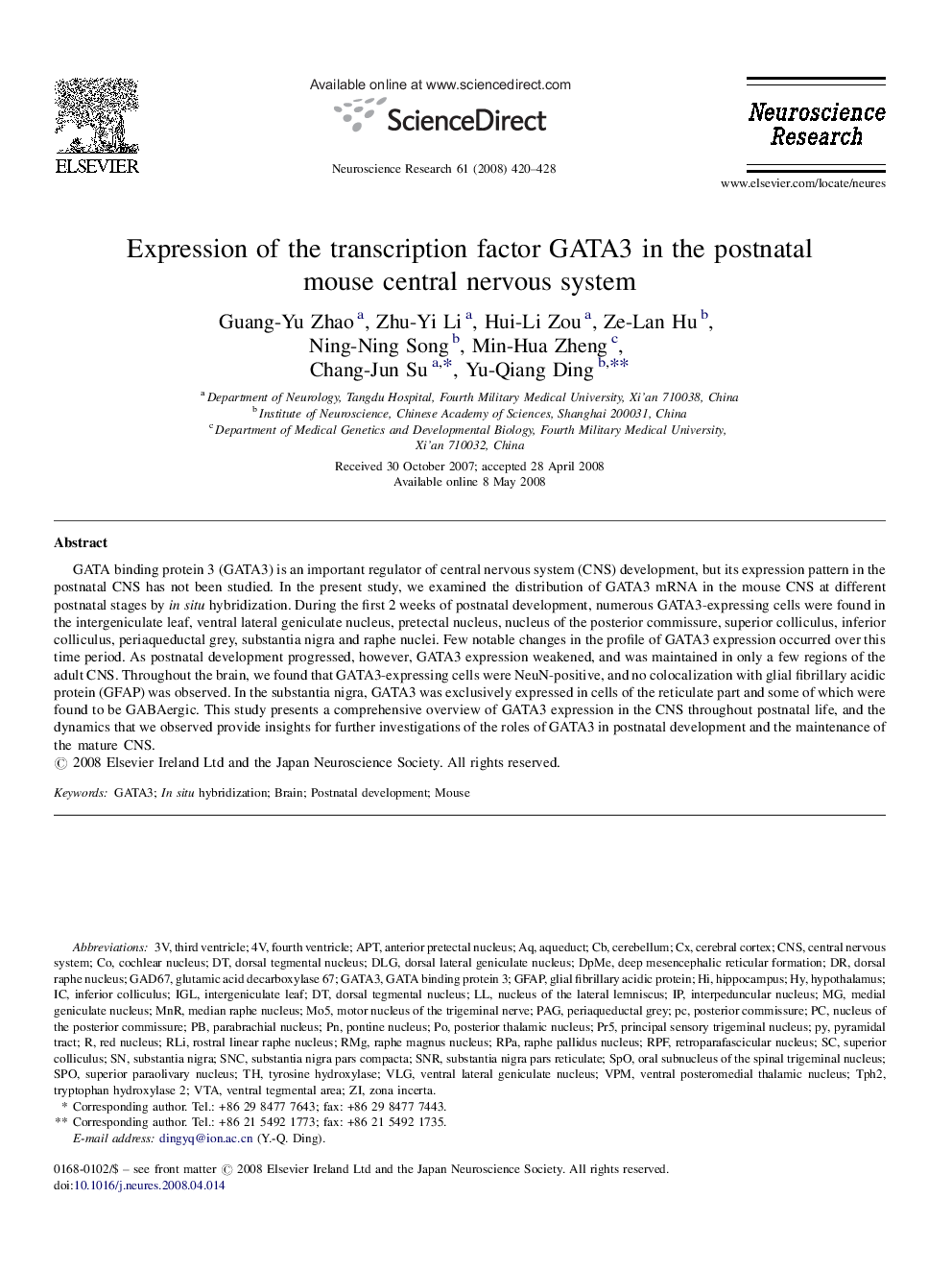| Article ID | Journal | Published Year | Pages | File Type |
|---|---|---|---|---|
| 4352542 | Neuroscience Research | 2008 | 9 Pages |
Abstract
GATA binding protein 3 (GATA3) is an important regulator of central nervous system (CNS) development, but its expression pattern in the postnatal CNS has not been studied. In the present study, we examined the distribution of GATA3 mRNA in the mouse CNS at different postnatal stages by in situ hybridization. During the first 2 weeks of postnatal development, numerous GATA3-expressing cells were found in the intergeniculate leaf, ventral lateral geniculate nucleus, pretectal nucleus, nucleus of the posterior commissure, superior colliculus, inferior colliculus, periaqueductal grey, substantia nigra and raphe nuclei. Few notable changes in the profile of GATA3 expression occurred over this time period. As postnatal development progressed, however, GATA3 expression weakened, and was maintained in only a few regions of the adult CNS. Throughout the brain, we found that GATA3-expressing cells were NeuN-positive, and no colocalization with glial fibrillary acidic protein (GFAP) was observed. In the substantia nigra, GATA3 was exclusively expressed in cells of the reticulate part and some of which were found to be GABAergic. This study presents a comprehensive overview of GATA3 expression in the CNS throughout postnatal life, and the dynamics that we observed provide insights for further investigations of the roles of GATA3 in postnatal development and the maintenance of the mature CNS.
Keywords
substantia nigra pars reticulateRMGVPMVTAPr5PAGMo5glutamic acid decarboxylase 67Gad67DpMeDLGtph2SNRAPTGATA3SNCSPORPARPFRLIGFAPVLGIn situ hybridizationMnRaqueductIGLthird ventriclefourth ventriclesubstantia nigrasubstantia nigra pars compactaPostnatal developmenttyrosine hydroxylasePeriaqueductal greyPyramidal tractCNSSuperior colliculuscentral nervous systemcerebral cortexCerebellumBrainzona incertaMouseventral tegmental areainterpeduncular nucleusparabrachial nucleussuperior paraolivary nucleusposterior thalamic nucleusVentral posteromedial thalamic nucleusPrincipal sensory trigeminal nucleusmedian raphe nucleusraphe pallidus nucleusraphe magnus nucleusdorsal raphe nucleusred nucleusDorsal tegmental nucleusdorsal lateral geniculate nucleusmotor nucleus of the trigeminal nervepontine nucleusanterior pretectal nucleusmedial geniculate nucleusventral lateral geniculate nucleusnucleus of the posterior commissureCochlear Nucleustryptophan hydroxylase 2HypothalamusHippocampusGlial fibrillary acidic proteinGATA binding protein 3Posterior commissureInferior colliculus
Related Topics
Life Sciences
Neuroscience
Neuroscience (General)
Authors
Guang-Yu Zhao, Zhu-Yi Li, Hui-Li Zou, Ze-Lan Hu, Ning-Ning Song, Min-Hua Zheng, Chang-Jun Su, Yu-Qiang Ding,
